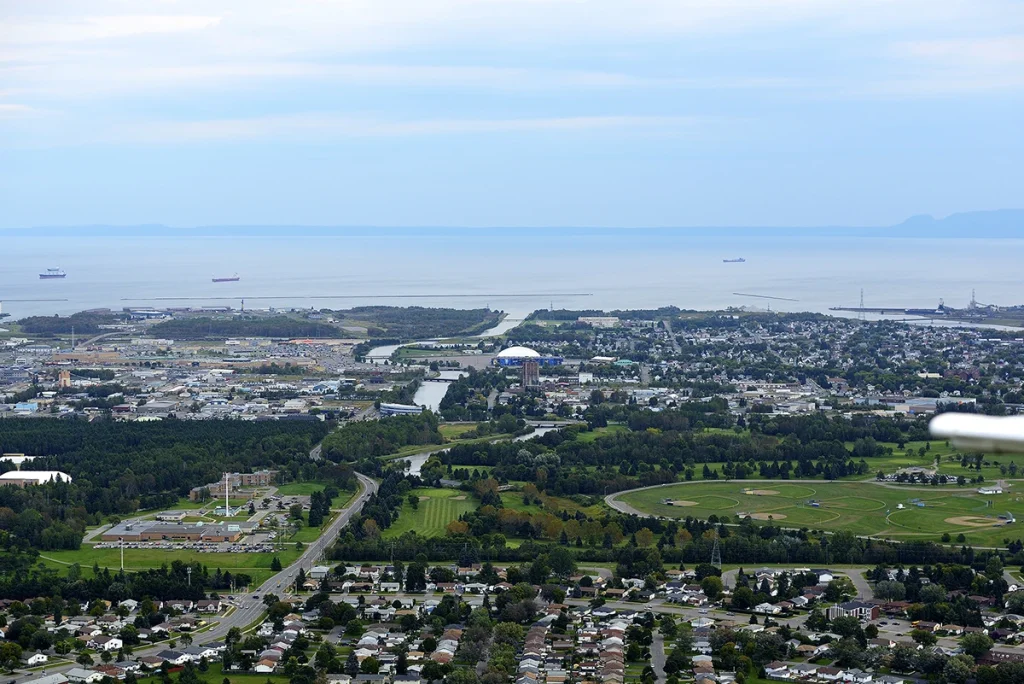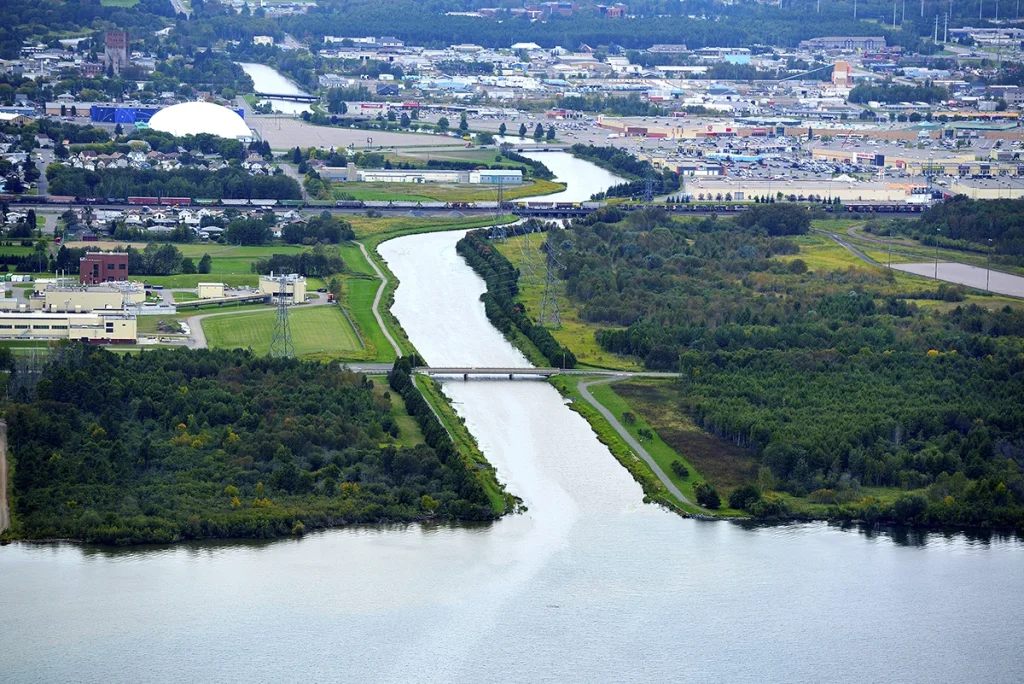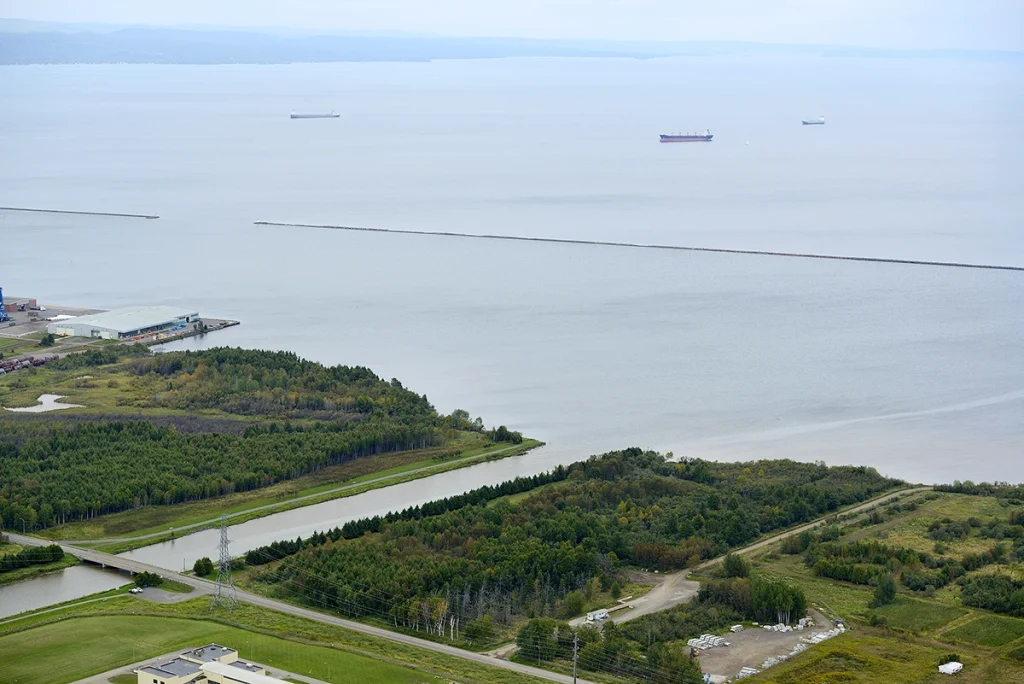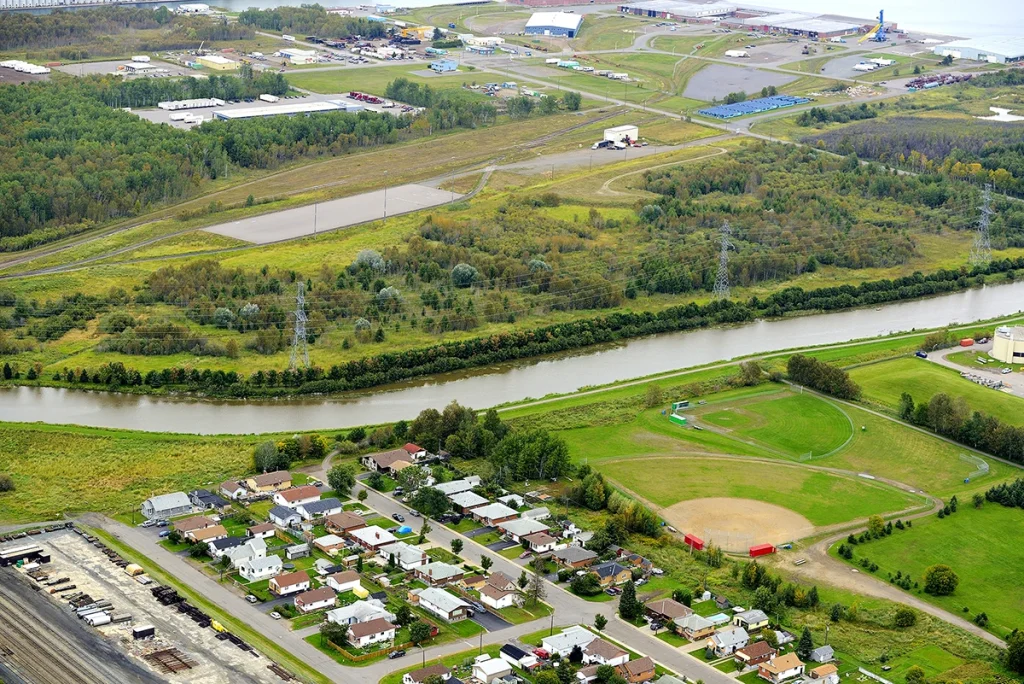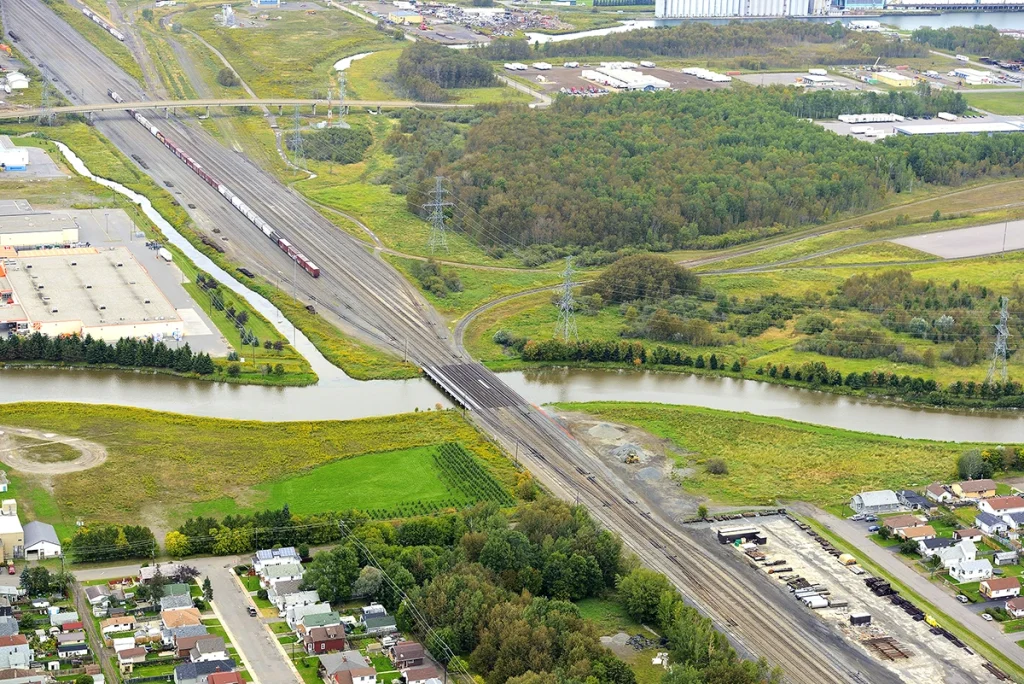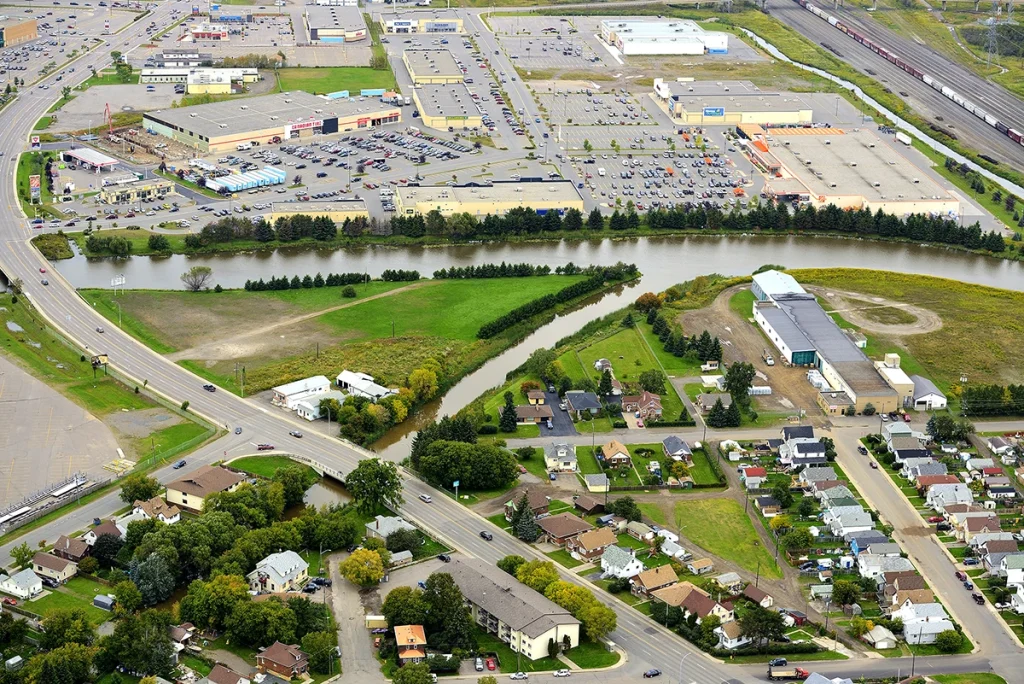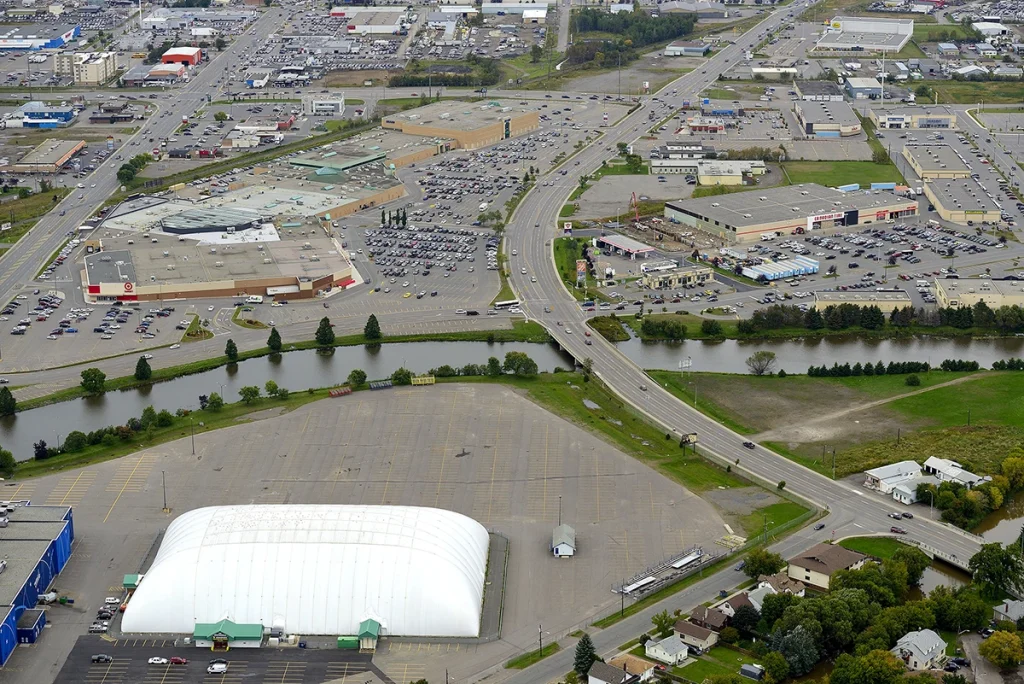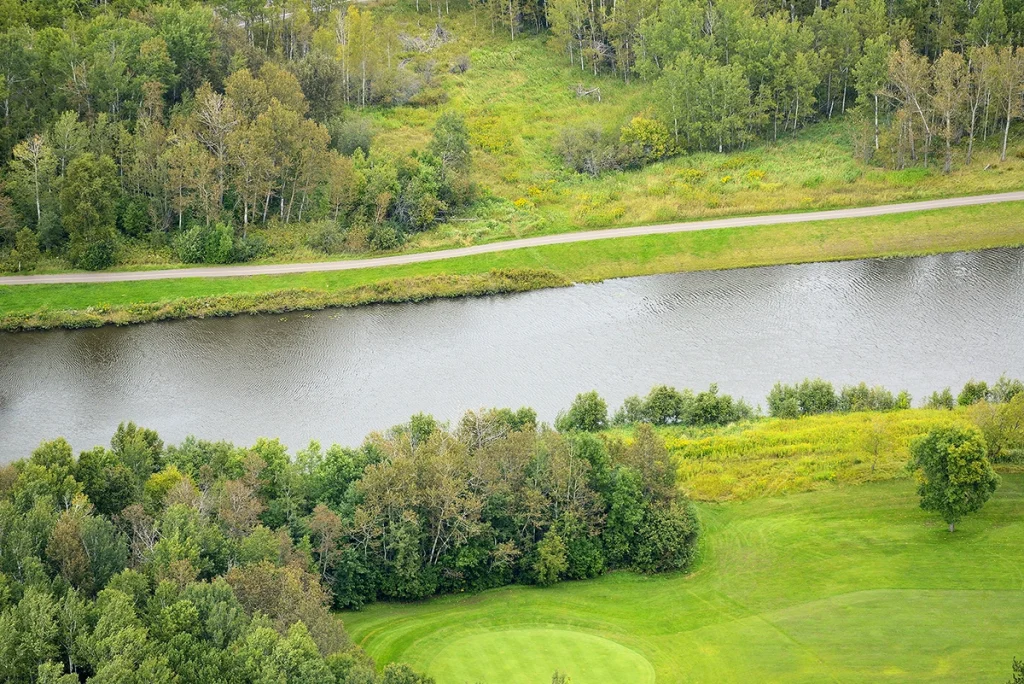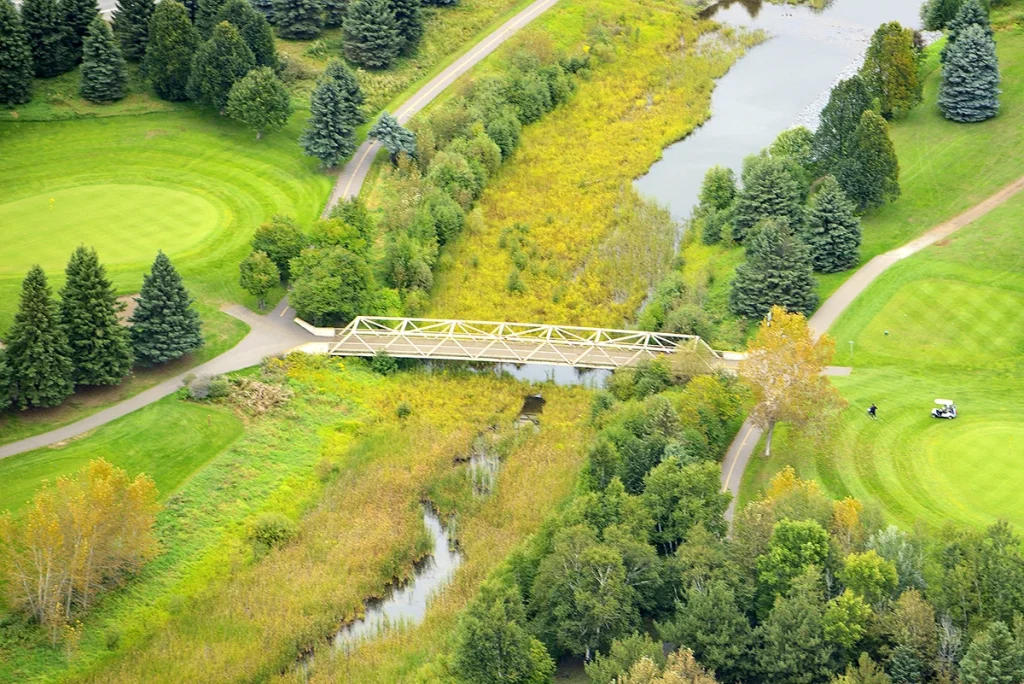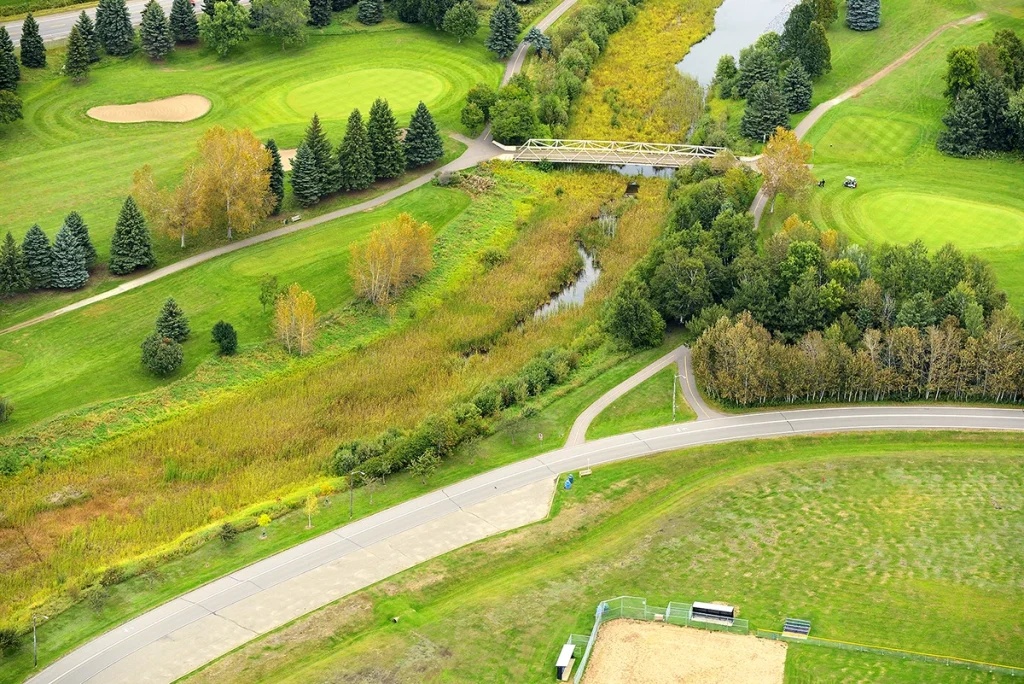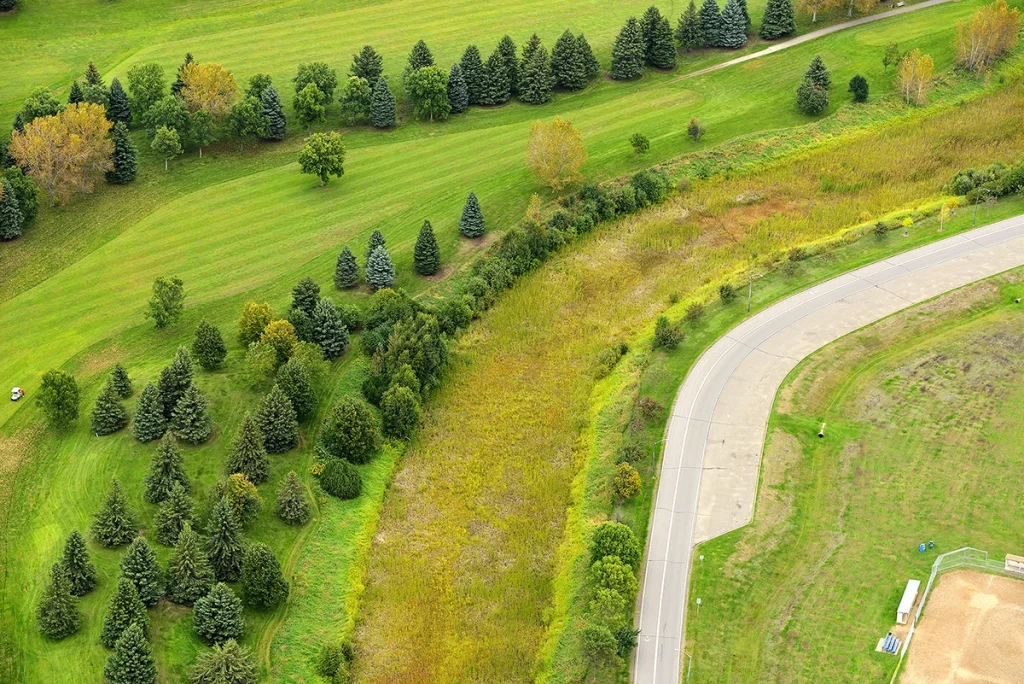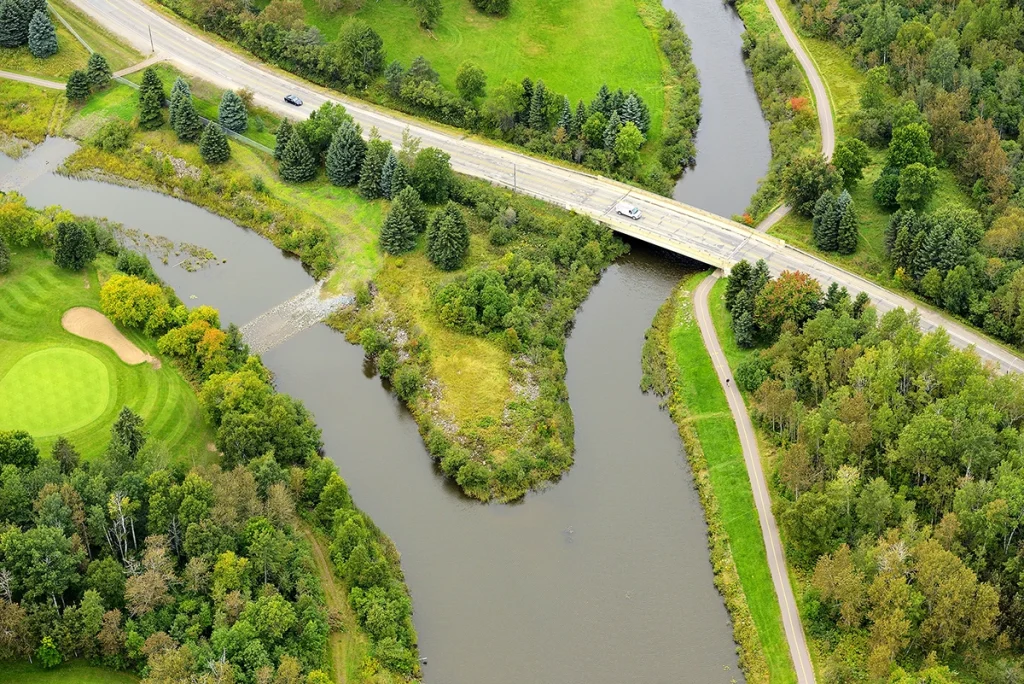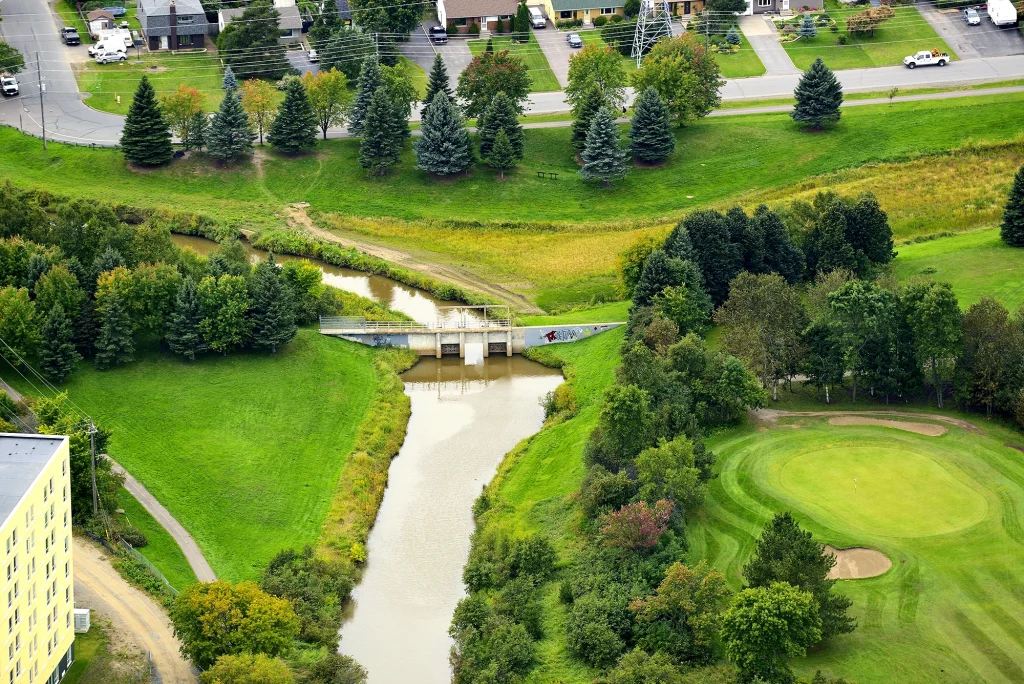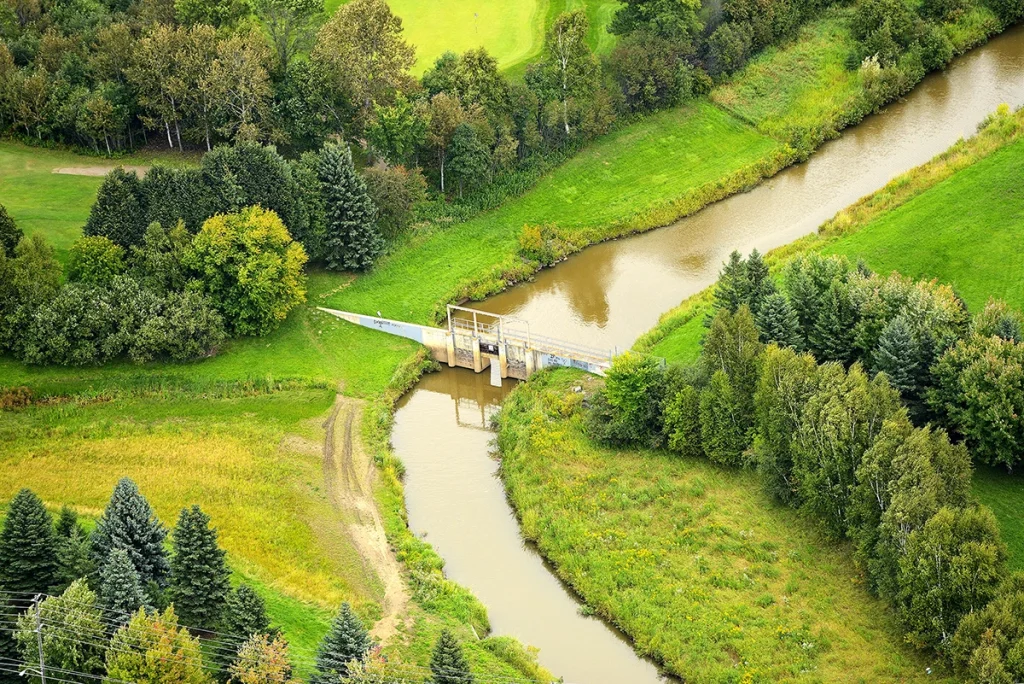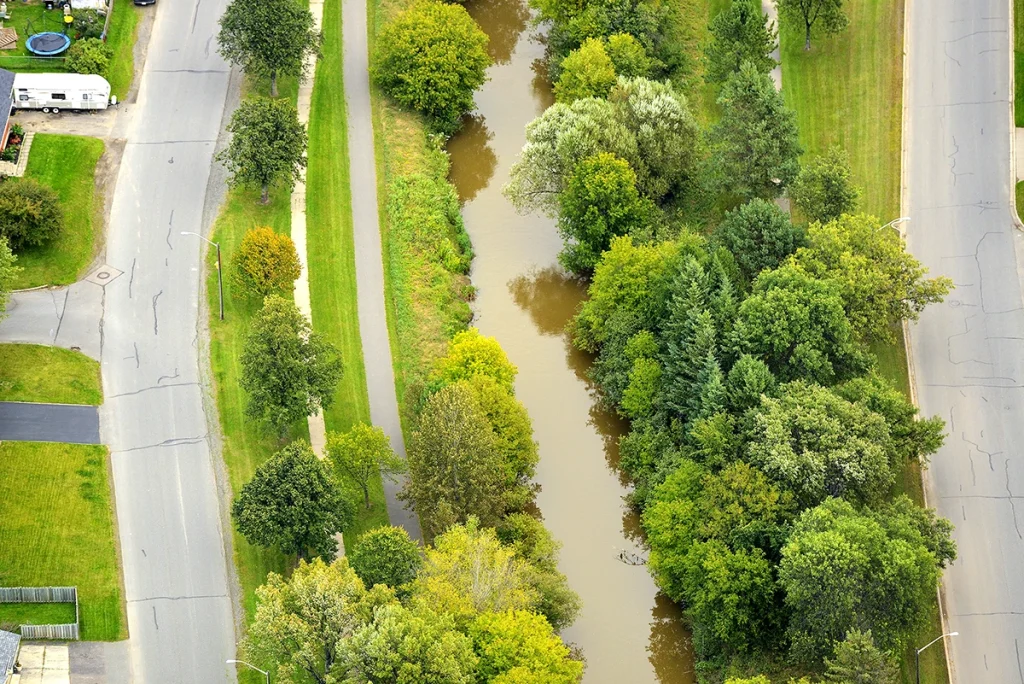The Neebing-McIntyre Floodway was constructed 1984 to address flooding in the lower Neebing River and Intercity Area in the City of Thunder Bay. The project was completed by the Lakehead Region Conservation Authority with a final cost of $15-million dollars.
Overview Map of the Neebing-McIntyre FloodwayFloodway Fact Sheet
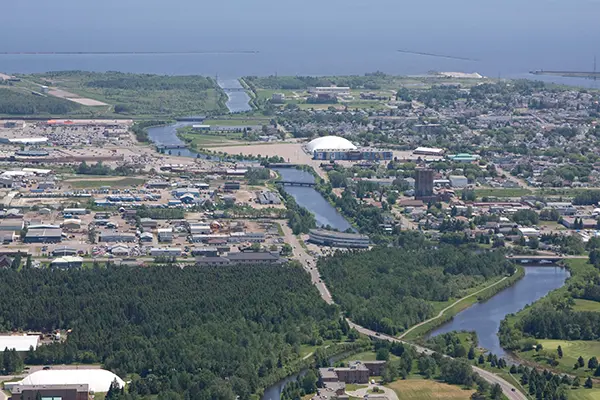
The main features of the Floodway include:
- Diversion Structure at Ford Street
- Diversion Channel
- Sediment Trap at Balmoral Street
- Sediment Trap at CPR Bridge
- Widened and deepened Floodway Channel to Lake Superior
- Outlet into Lake Superior
Operation
During flood events the Floodway operates without any required actions. The Diversion Structure limits flows down the lower Neebing River and diverts excess flows into the 1.5 kilometre Diversion Channel which directs excess flows to the widened, deepened Neebing-McIntyre Floodway to Lake Superior.
History
In 1941, the region was hit by a fierce storm which caused extensive flooding on the Neebing River. The flood waters rose to the point where they overflowed into the McIntyre River. In an attempt to deal with flooding problems, the Neebing Valley Conservation Authority (NVCA) was created in 1954. In 1963, as a result of expansion, the NVCA became the Lakehead Region Conservation Authority (LRCA). Since then, the Lakehead Region has received several major rainstorms. The first three major storms, occurring in 1968, 1971 and 1977, caused the Intercity area to experience major damage due to flooding. Such was not the case in 1997, 2008 and 2012 thanks to the construction of the Floodway. The major storm in 2012 resulted in extensive damage; however the Floodway itself was fully functional and worked exactly as designed resulting in no riverine flooding in the lower Neebing River or Intercity area.
Recreation
The Neebing-McIntyre Floodway also serves as a recreational attraction. Various paved trails along the floodway and diversion channel link to City of Thunder Bay trail network. There are also some fantastic wildlife viewing opportunities along the Floodway, including waterfowl, amphibians, groundhogs, songbirds and more!


